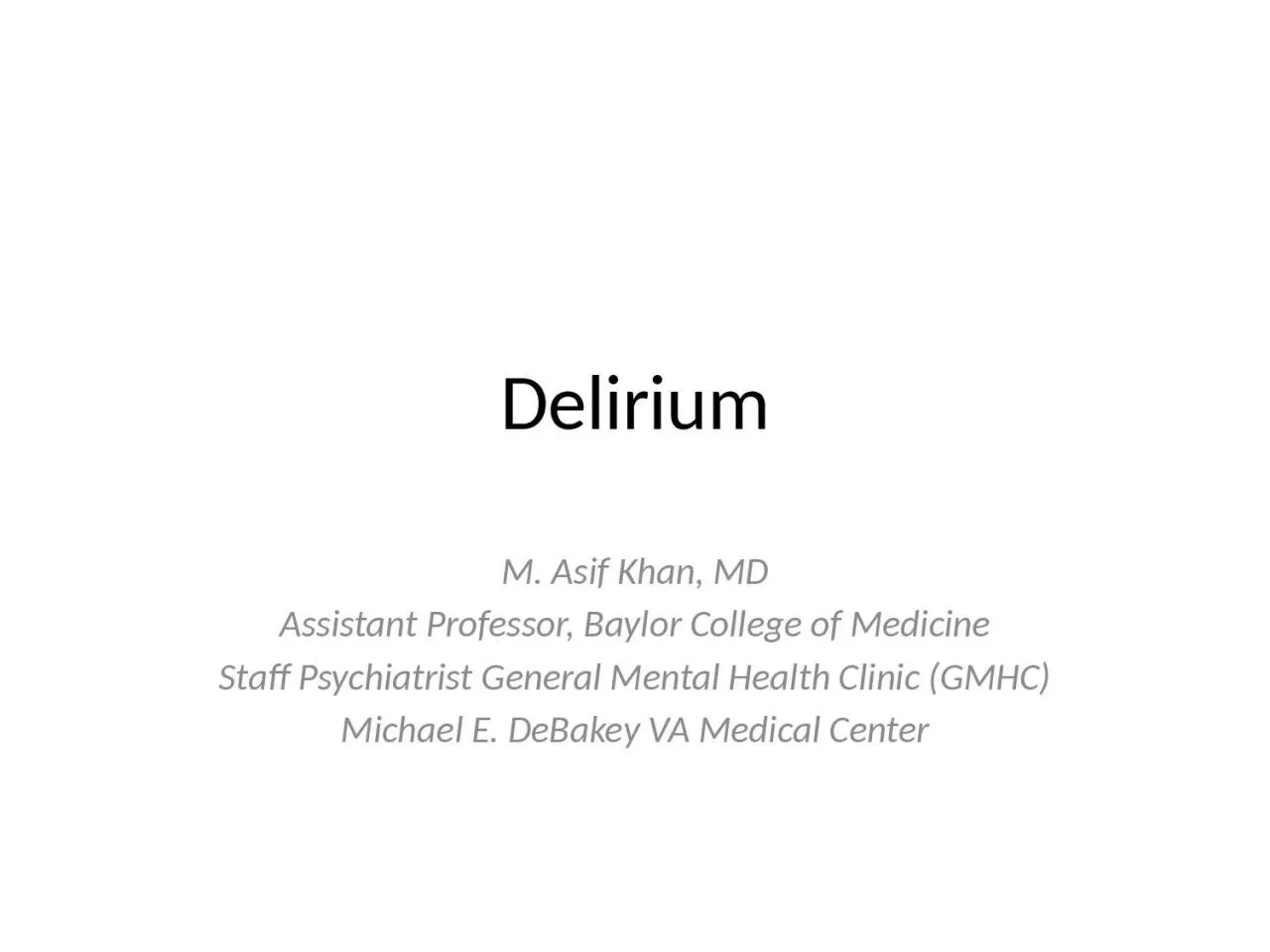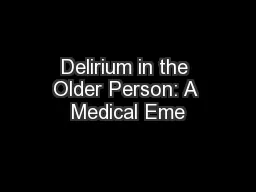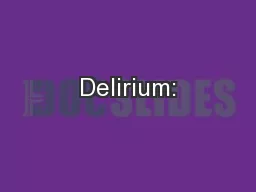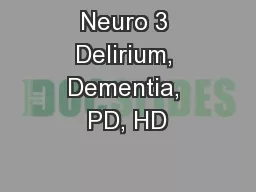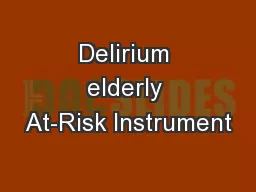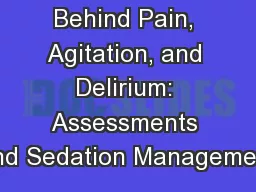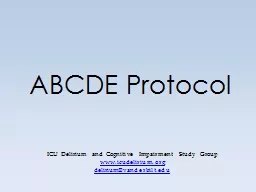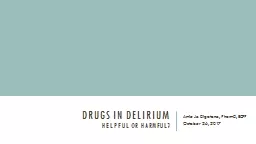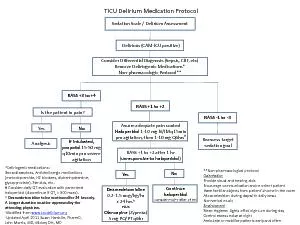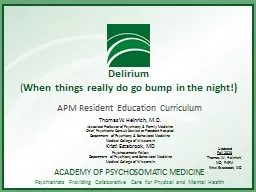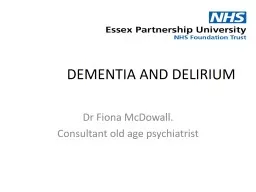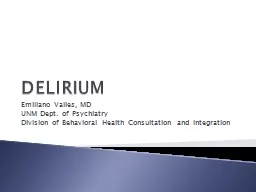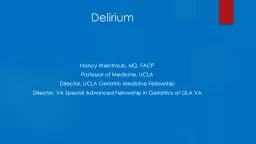PPT-Delirium M. Asif Khan, MD
Author : samantha | Published Date : 2023-05-31
Assistant Professor Baylor College of Medicine Staff Psychiatrist General Mental Health Clinic GMHC Michael E DeBakey VA Medical Center Objectives Overview of Delirium
Presentation Embed Code
Download Presentation
Download Presentation The PPT/PDF document "Delirium M. Asif Khan, MD" is the property of its rightful owner. Permission is granted to download and print the materials on this website for personal, non-commercial use only, and to display it on your personal computer provided you do not modify the materials and that you retain all copyright notices contained in the materials. By downloading content from our website, you accept the terms of this agreement.
Delirium M. Asif Khan, MD: Transcript
Download Rules Of Document
"Delirium M. Asif Khan, MD"The content belongs to its owner. You may download and print it for personal use, without modification, and keep all copyright notices. By downloading, you agree to these terms.
Related Documents

